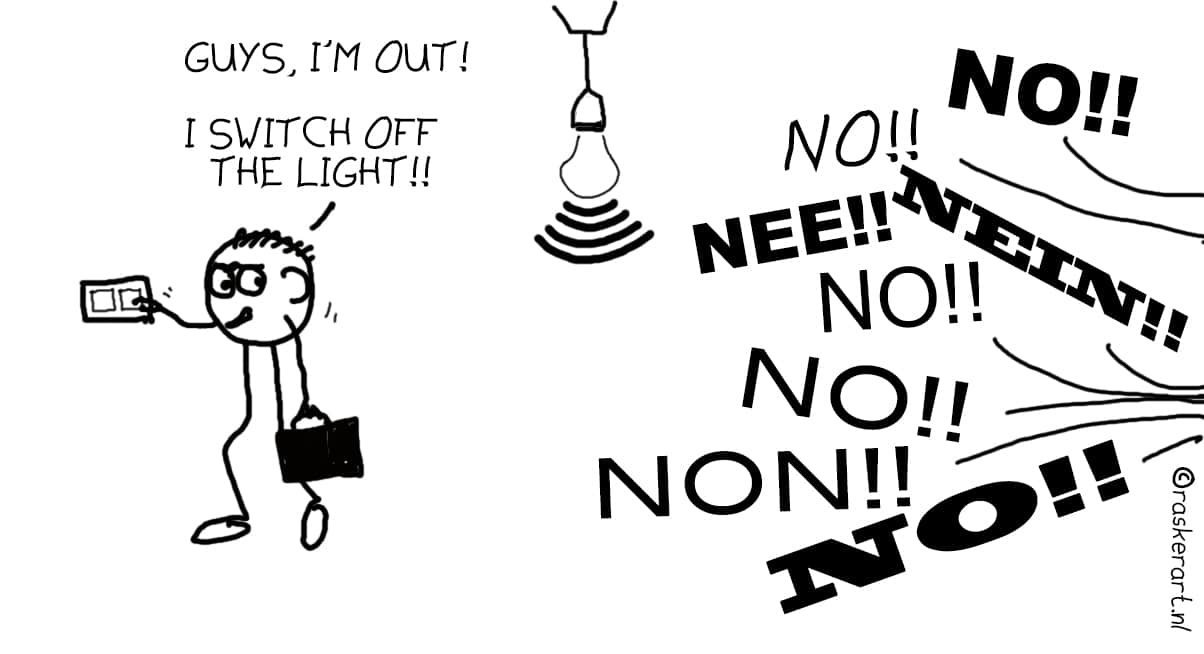
Once again the articles about the pros and cons of driving electric cars scored the highest this week. However, since we don’t want to discuss the same subject every week in the ‘Best read’ section, we would like to talk about the subject that came in fourth place. This was about an experiment whereby journalists in Hamburg football are not communicating via Wi-Fi, but via Li-Fi, which is a type of wireless internet that transmits data via lighting. This is a rare opportunity for readers to be reminded that the inventor of Wi-Fi is a Dutchman – the Amsterdammer Cees Links. At the time, Links liked the abbreviation ‘Wi-Fi’ mainly because it reminded him of his beloved ‘Bifi’ snack sausage. But back to the subject: assistant professor of computer technology Marco Zuniga Zamalloa at TU Delft on the question of whether Li-Fi will oust the now old, familiar Wi-Fi.
Last week there was a demonstration in The Hague in protest of the alleged dangers of radiation from the radio waves in the upcoming 5G. Is Li-Fi a better option?
“For the sake of clarity: 5G is a collective term for multiple technologies that we will be able to use for wireless internet. 5G stands for ‘fifth generation’. So a technology such as Li-Fi, which uses light, could, in principle, also fall under this category. To come back to your question: the disadvantage of Wi-Fi is that we have to use the radio frequency spectrum. That’s already packed. So how much space is actually still available on there in order to be able to transmit even more data? We know what happens when it gets too crowded there. For example, if everyone wants to call at the same time on their mobile phone. In that case, the network becomes overloaded and it will not work properly. You don’t have that problem if you start using lighting as a means of transmitting data. This is because the light spectrum is still completely open. And you don’t need to pay out millions in order to be able to use that empty space of the light spectrum for transmitting data. Because there are no rules for that yet. You do have to do that when using radio waves.”
So, it’s bound to be Li-Fi?
That remains to be seen. Light also has disadvantages. With today’s lamps, you are able to emit light signals, whereas in the past that was not possible with ordinary tungsten light bulbs. But the question is how efficiently you will then use your energy. Suppose the sun is shining and you don’t have to turn on any lamps to light up your house or office. In order to send data wirelessly, you still have to switch on a light. That costs you extra energy which you would not have otherwise used if you had kept on using Wi-Fi radio waves. Another drawback is that anything that blocks light – a wall, a door or a curtain in front of the window – also blocks your data. Just like sound waves, the light can’t go straight through everything. However, this problem can be solved because you will be able to transmit data via receivers in a room where you are located. One of the major advantages of Li-Fi is that is able to guarantee the privacy of your data. as this data cannot leave the room via light due to physical barriers. This might be an added bonus for hospitals, for example.”
Is there another wireless system under development which could compete with Wi-Fi and Li-Fi?
“There is LoRaWAN, also known as LPWAN. That’s an abbreviation for Low-power wide-area network. This is used for transmitting small bundles of data, for instance from sensors that are suspended in outdoor areas. The batteries of these systems, which are used for ‘the internet of things’, are only active when data is being transmitted. They, therefore, require very little energy. This means they can last up to ten years if not longer. The situation with your phone is very different: the battery is being used all the time and it runs out faster. It is impossible to say which wireless internet technology will eventually dominate. I think we’re going to use all three of them alongside each other. I don’t think that Wi-Fi will disappear as a result of Li-Fi. We’ve been using radio waves for so long that the basis of our infrastructure is fully geared towards it.”

